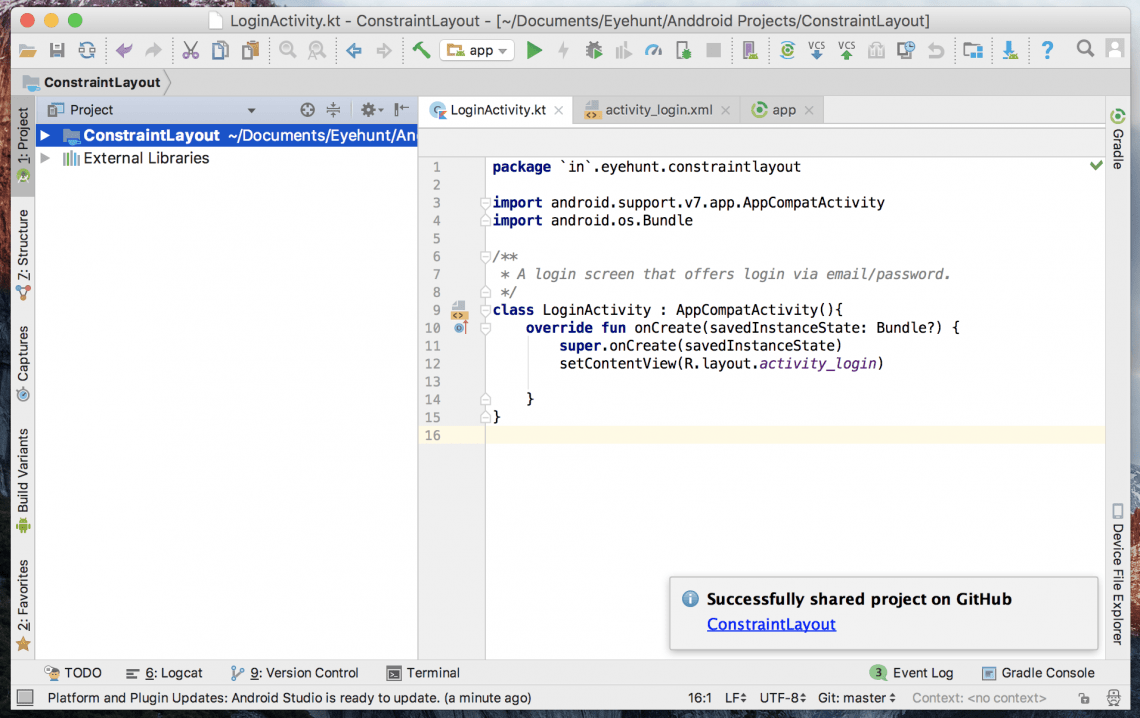



Now your code is pushed to your GitHub repository. If it’s all good, you will see this message. Now enter your GitHub Login (email address) and Password. Now, right click the project name, select Git > Repository > Push.Ĭheck the box Push current branch to alternative branch and leave the branch name as master. (Unless it’s a real project, in which case review and fix the issue before committing!) If a Code Analysis warning appears, click Commit. In the next screen, type a Commit Message and select Commit. Now right click the project name again and this time select Git > Commit Directory. It will seem like nothing has happened, but trust me, the project files are added. This will add all your project files to your Git repository. Next, jump back into Android Studio, right click your projects root directory and select Git > Add. The GitHub remote will be added to your Git repository. When the Git bash screen appears, type: git remote add origin /.git

Right click and select Git Bash (If you do not see this option, then first install Git for Windows). Now use Windows Explorer and navigate to the root of your projects folder. On the next screen, leave it all as default and click OK. On the top menu, select VCS > Import into Version Control > Create Git Repository. Your new project will open in Android Studio. In the next screen, leave the default activity name of MyActivity and click Finish. On the Add an activity to Mobile screen select Blank Activity and click Next. Leave the next page as default and click Next. Next, open Android Studio and create a new project. Leave the Initialize this repository with a README unticked. Now complete the form to create a new repository called testproject. From the top right corner of the screen, click the + sign and select New repository. This article provides a basic overview of how to use GitHub with Android Studio.įirstly, let’s login to and create a new repository.


 0 kommentar(er)
0 kommentar(er)
